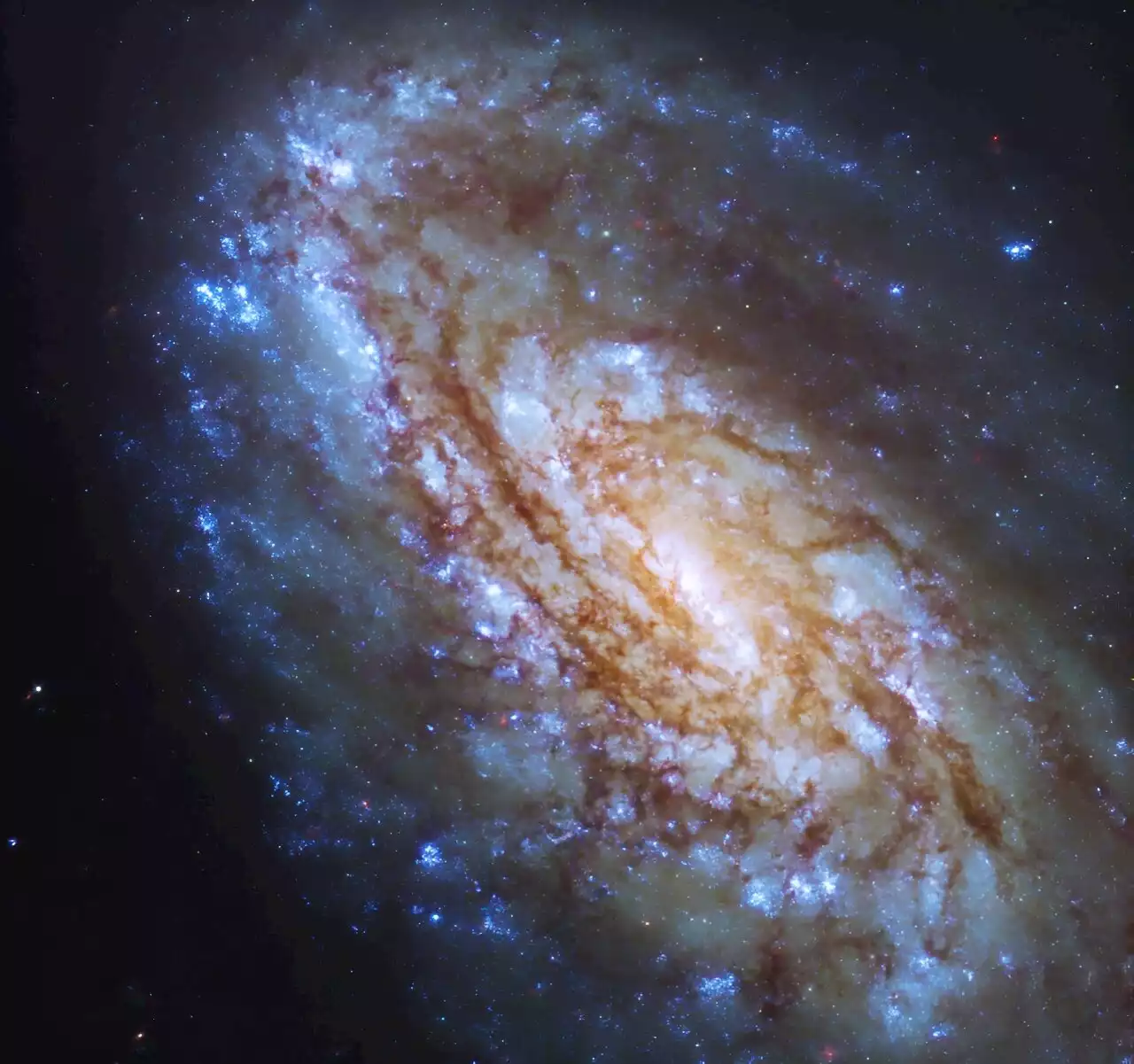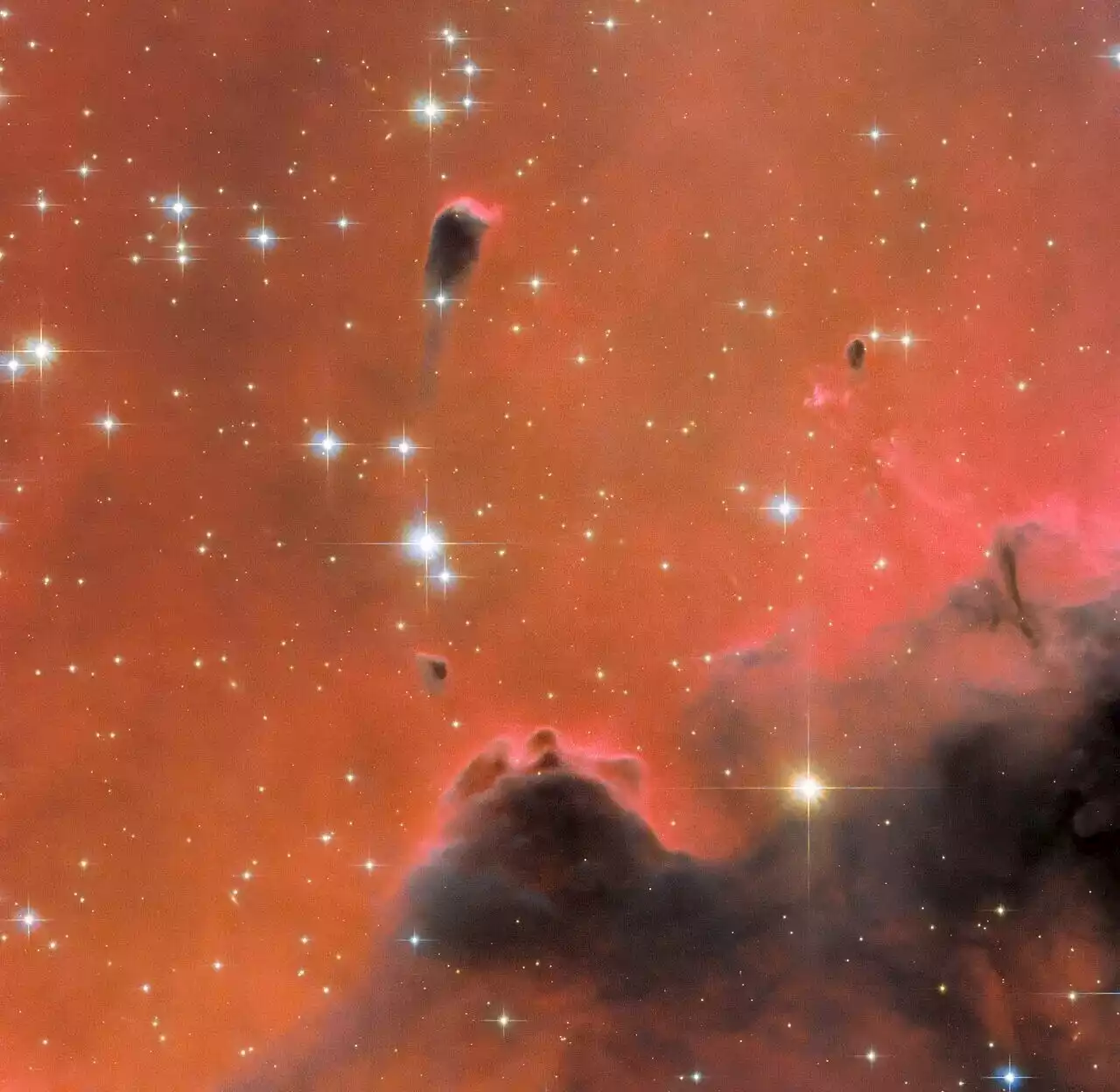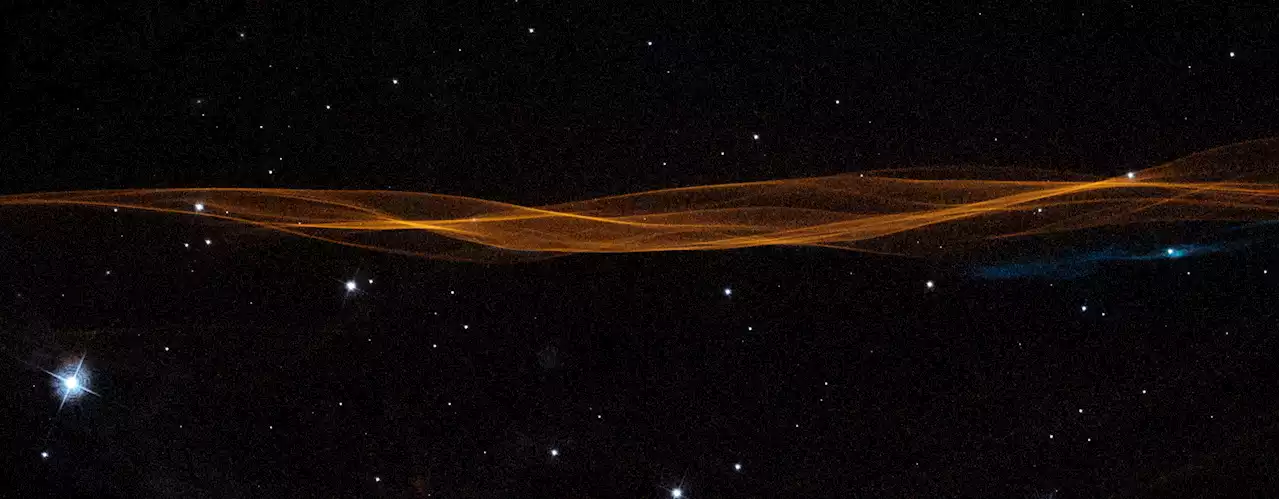A striking orange and blue streak fills this new image from NASA's Hubble Space Telescope. Hubble's visible and infrared capabilities captured this edge-on view of lenticular galaxy NGC 612. Lenticular galaxies have a central bulge and disk much like spiral galaxies, but they lack the characteristic arms. They typically have older star populations and little ongoing star formation. In NGC 612, dust and cool hydrogen gas make up the majority of the galactic disk, the plane of matter we see in orange and dark red. This galaxy appears in the Sculptor constellation and is easily visible from Earth's southern hemisphere.
This document is subject to copyright. Apart from any fair dealing for the purpose of private study or research, no part may be reproduced without the written permission. The content is provided for information purposes only.Use this form if you have come across a typo, inaccuracy or would like to send an edit request for the content on this page. For general inquiries, please use ourThank you for taking time to provide your feedback to the editors.
Your feedback is important to us. However, we do not guarantee individual replies due to the high volume of messages.to let the recipient know who sent the email. Neither your address nor the recipient's address will be used for any other purpose. The information you enter will appear in your e-mail message and is not retained by Phys.org in any form.Get weekly and/or daily updates delivered to your inbox.
This site uses cookies to assist with navigation, analyse your use of our services, collect data for ads personalisation and provide content from third parties. By using our site, you acknowledge that you have read and understand our
Australia Latest News, Australia Headlines
Similar News:You can also read news stories similar to this one that we have collected from other news sources.
 Hubble views NGC 4654 in the constellation VirgoIt's easy to get swept up in the swirling starry arms of this intermediate spiral galaxy, NGC 4654, in the constellation Virgo. The galaxy has a bright center and is labeled 'intermediate' because it has characteristics of both unbarred and barred spirals. NGC 4654 is just north of the celestial equator, making it visible from the northern hemisphere and most of the southern hemisphere. The galaxy is about 55 million light-years from Earth.
Hubble views NGC 4654 in the constellation VirgoIt's easy to get swept up in the swirling starry arms of this intermediate spiral galaxy, NGC 4654, in the constellation Virgo. The galaxy has a bright center and is labeled 'intermediate' because it has characteristics of both unbarred and barred spirals. NGC 4654 is just north of the celestial equator, making it visible from the northern hemisphere and most of the southern hemisphere. The galaxy is about 55 million light-years from Earth.
Read more »
 Goddard Physicist Inducted to NASA Inventors Hall of FameNASA physicist Edward J. Wollack was inducted into the NASA Inventors Hall of Fame this year.
Goddard Physicist Inducted to NASA Inventors Hall of FameNASA physicist Edward J. Wollack was inducted into the NASA Inventors Hall of Fame this year.
Read more »
 Goddard Physicist Inducted to NASA Inventors Hall of FameNASA physicist Edward J. Wollack was inducted into the NASA Inventors Hall of Fame this year.
Goddard Physicist Inducted to NASA Inventors Hall of FameNASA physicist Edward J. Wollack was inducted into the NASA Inventors Hall of Fame this year.
Read more »
 Hubble views a glistening red nebula Westerhout 5Just in time for the fall foliage season, this image from the NASA/ESA Hubble Space Telescope features a glistening scene in red. It reveals a small region of the nebula Westerhout 5, which lies about 7,000 light-years from Earth. Suffused with bright red light, this luminous image hosts a variety of interesting features, including a free-floating Evaporating Gaseous Globule (frEGG).
Hubble views a glistening red nebula Westerhout 5Just in time for the fall foliage season, this image from the NASA/ESA Hubble Space Telescope features a glistening scene in red. It reveals a small region of the nebula Westerhout 5, which lies about 7,000 light-years from Earth. Suffused with bright red light, this luminous image hosts a variety of interesting features, including a free-floating Evaporating Gaseous Globule (frEGG).
Read more »
 Astronomers Have Been Watching a Supernova's Debris Cloud Expand for Decades with HubbleThanks to the Hubble's longevity, astronomers have observed this expanding supernova remnant for two decades.
Astronomers Have Been Watching a Supernova's Debris Cloud Expand for Decades with HubbleThanks to the Hubble's longevity, astronomers have observed this expanding supernova remnant for two decades.
Read more »
